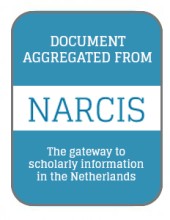Land Library
Welcome to the Land Portal Library. Explore our vast collection of open-access resources (over 74,000) including reports, journal articles, research papers, peer-reviewed publications, legal documents, videos and much more.
/ library resources
Showing items 1 through 9 of 99.markdownabstractUsing empirical case materials from the Philippines and referring to rich experiences from different countries historically, this book offers conceptual and practical conclusions that have far-reaching implications for land reform throughout the world.
Clay is a common lithology in the Dutch shallow subsurface. It is used in earth constructions such as dikes, and as raw material for the fabrication of bricks, roof tiles etc.
"This study highlights lessons from recent policy, law and practice to improve and secure access to rural land for poorer groups. It focuses on Africa, Latin America and Asia, while also referring to experience from Central and Eastern Europe and the Commonwealth of Independent States.
From the foreword: "A major goal of CFI's mission in Cambodia is to support the involvement of civil society in the management of forests.
Land is the repository of memory and keeps traces of the past in the absence of a strong written tradition. It is perceived as an open book from which anyone can read and learn about local history: place names, old roads, legends and stories attached to places.
A webpage of an organization monitoring government granting of land use for investment purpose with a highlight on land area and location granted to Taing Lux Company in Cambodia in 2006.
Het streekplan Gelderland 2005 biedt de mogelijkheid om tot 2015 het areaal glastuinbouw in de provincie fors uit te breiden. Gezien de landelijke ontwikkelingen in de glastuinbouw en de streekplannen van andere provincies is het echter de vraag of deze uitbreiding noodzakelijk is.
Samenvatting van wetenschappelijke kennis over de effecten van klimaatverandering en de mogelijkheden om daar mee om te gaan. Dit rapport helpt om een strategie op te stellen om bij ruimtelijke ordening rekening te houden met de gevolgen van klimaatverandering.
Het klimaat verandert en dat heeft economische, ecologische en sociale gevolgen. Veel van die gevolgen hebben een ruimtelijke weerslag. We kunnen op een aantal ervan met ruimtelijke ingrepen anticiperen om de negatieve effecten op te vangen en van de kansen optimaal gebruik te maken.



